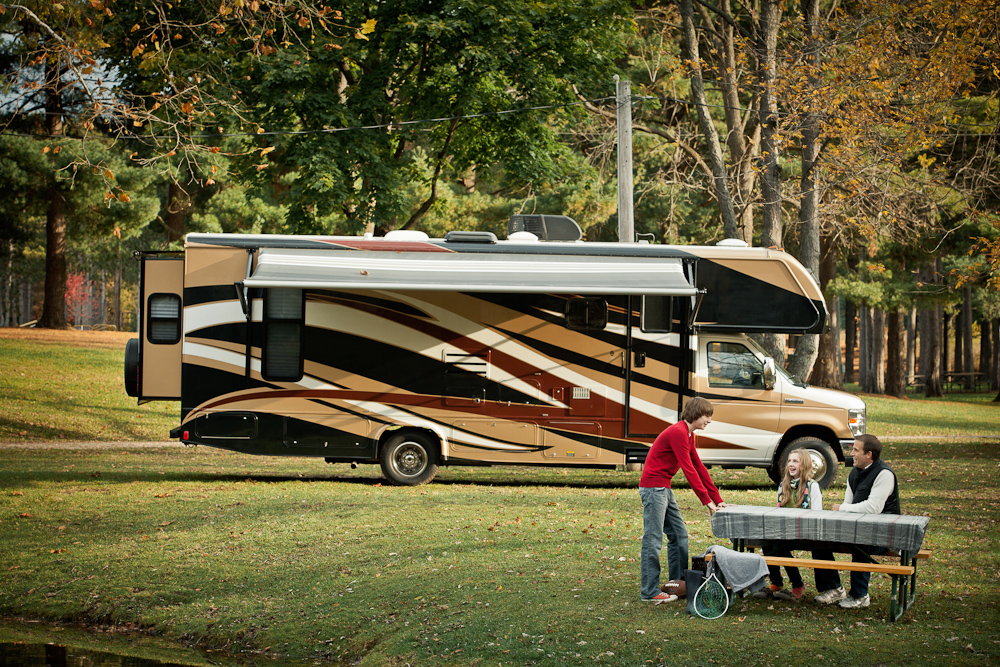Weight gain doesn’t just happen when the holidays roll around. Weight loss isn’t just a goal for the New Year. When it comes to your RV, weight matters. If it gets too heavy, it’s important to take some off – and keep it off! But the best thing is never reach that point in the first place.
Over time we can inadvertently stuff the storage compartments and dashboards of our RVs until space runs out and the vehicle gets too heavy. Maybe we underestimated the weight of our personal possessions or didn’t take into account how many people will be aboard. This, in turn, affects your safety as well as the economy and overall operation of your RV or tow vehicle. So what can you do about it?
- Understand your restrictions. It’s essential to understand (1) how much your RV weighs by itself; and (2) how much it weighs when it’s fully loaded. Most RVs have a label showing the weight capacity for both of these categories, usually on the inside of a cabinet or closet. This label complies with the Federal Government Standards (remember, weight is regulated). You cannot exceed your Gross Vehicle Weight Rating, “the maximum allowable weight of the fully loaded vehicle, including liquids, passengers, cargo and the tongue weight of any towed vehicle.” You should also know, if you have a towable RV, the towing capacity of your tow vehicle. Don’t assume that since you have a truck that it can handle a fully loaded fifth-wheel.
- Don’t forget the essentials. In addition to all the stuff you bring along inside your RV for daily life are essentials for daily living such as propane and water. These are not factored in the Net Carrying Capacity (NCC). However, after a certain date, it changed to Cargo Carrying Capacity (CCC), which does take certain things into account that the NCC previously did not. The weight of passengers is also not factored into this figure (for motorized RVs), nor is the weight of any accessories such as solar panels or satellite dishes). Yes, you’re going to have to do some math to figure our your NCC or CCC. (This article from DIY RVing can also help.)
- Get your RV on the scale. We can estimate what we think a fully loaded RV weighs, but you don’t actually know until you get the RV weighed. First, load your RV as you would for normal travel. Find a public weigh-scale, usually at a truck stop, and get weighed axle-by-axle. This is to reveal any imbalances, which should be fixed before embarking on any trips. You should also learn the weight of each tire position.
According to the RV Safety and Education Foundation, 51 percent of new RVs exceed one or more safety ratings. Being aware and taking the necessary steps are key. Follow the law, take care of yourself and your RV, and manage the weight appropriately.

